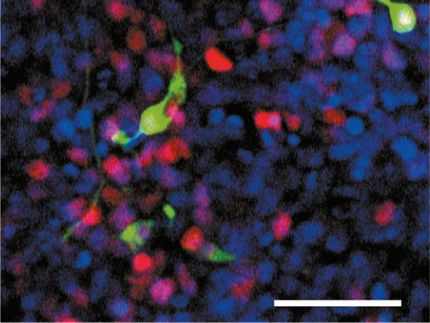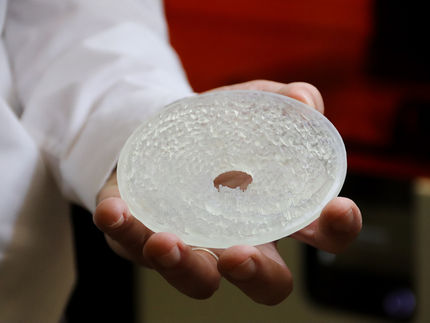Transmission routes of spreading protein particles
Study on cell cultures gives insights into the mechanisms of neurodegenerative diseases
In diseases like Alzheimer’s and Parkinson’s endogenous proteins accumulate in the brain, eventually leading to the death of nerve cells. These deposits, which consist of abnormally formed proteins, are supposed to migrate between interconnected areas of the brain, thereby contributing to the development of the illness. Now, a new laboratory study by scientists from Germany and the US shows that certain protein particles are indeed capable of multiplying and spreading from one cell to the next. The investigation was conducted by researchers of the German Center for Neurodegenerative Diseases (DZNE) in Bonn and Munich who cooperated with scientists from the US and from other German institutions.

J. Hofmann
Are particles consisting of deformed proteins capable of moving from one cell’s interior to the next, multiplying and spreading as in a chain reaction? The team of scientists headed by Ina Vorberg, who is a researcher at the DZNE site in Bonn and a professor at the University of Bonn, investigated this hypothesis. The scientists did so with the help of cell cultures, which allowed them to adapt experiments to specific questions.
The researchers used cultured brain cells that originated from mice. The genetic code of a model protein was transferred into these cells, enabling the scientists to control production of the protein.
A yeast particle
The blueprint of the molecule was extracted from yeast DNA. This protein does not exist in humans. Nevertheless, the scientists chose this particular protein because it had several properties that were relevant for the study: In its natural environment – the yeast cell – it is capable of forming replicating “aggregates” (i. e. large protein particles). The protein deforms during this process. Now, the question was, whether something similar would happen in mammalian cells.
“At first, our mouse cells produced the protein, but no particles formed,” Vorberg reports. “The situation changed when we exposed the cells to aggregates of the same protein. Suddenly, the proteins which had been in solution started building clumps.”
Diffusing aggregates
Once this reaction had been triggered the cells went on producing aggregates. The researchers noticed that these clumps spread into neighboring cells, where they initiated synthesis of further aggregates.
“We have experimentally shown that certain protein particles originating from the cytosol, i. e. from inside the cells, are able to spread between cells. This means that in mammalian cells there are mechanisms capable of triggering such a chain reaction. Accordingly, what we have shown in our model system may be applicable to neurodegenerative diseases,” Vorberg comments.
Propagation of aggregates was most effective between adjacent cells. “At least in our model system, protein particles are not released efficiently into the medium and assimilated by neighboring cells. The most effective transmission happens by direct cell-to-cell contact. It is possible that cells form protrusions and that aggregates move from one cell to the next through this connection”, says the neuroscientist. What is happening here will be the focus of further research.
Original publication
„Cell-to-cell propagation of infectious cytosolic protein aggregates”, Julia P. Hofmann, Philip Denner, Carmen Nussbaum-Krammer, Peer-Hendrik Kuhn, Michael H. Suhre, Thomas Scheibel, Stefan F. Lichtenthaler, Hermann M. Schätzl, Daniele Bano, Ina M. Vorberg, PNAS, 2013






















































